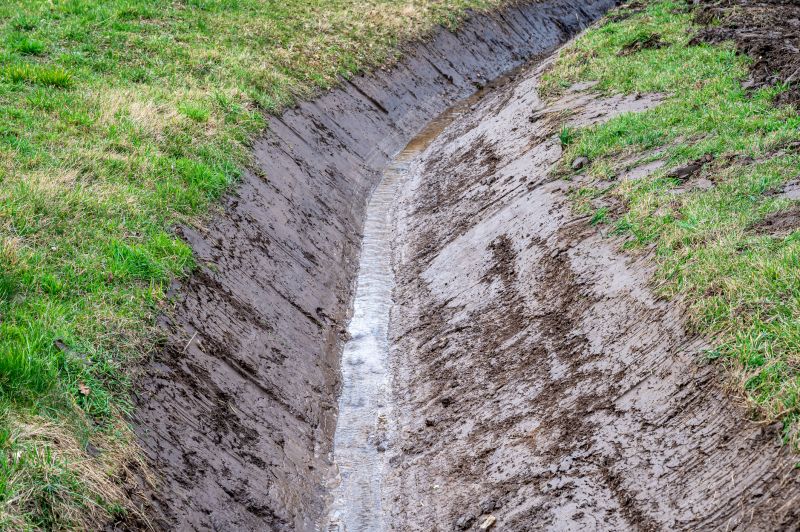Hillside Drainage Installation Costs

Steep or difficult-to-access sites typically increase labor and equipment costs for drainage installation.

Choosing durable, high-quality drainage materials can impact initial costs but may reduce long-term maintenance expenses.

Advanced methods like trenchless installation or custom solutions can influence overall project pricing.
| Factor | Average Cost Range |
|---|---|
| Site Preparation | $1,500 - $4,000 |
| Drainage Pipe Installation | $2,000 - $6,000 |
| Erosion Control Measures | $1,200 - $3,500 |
| Permitting and Inspection | $500 - $2,000 |
| Labor Costs | $3,000 - $8,000 |
| Materials | $1,000 - $4,000 |
| Drainage System Design | $800 - $2,500 |
| Additional Grading | $1,000 - $3,000 |

Different components such as pipes, catch basins, and filters affect overall project costs based on quality and quantity.

Materials like geotextiles, retaining walls, and silt fences contribute to the total cost and effectiveness of hillside drainage.

Use of excavators, trenchers, and other machinery influences labor and equipment costs.
| Similar Services | Average Price Range |
|---|---|
| Retaining Wall Installation | $4,000 - $12,000 |
| Erosion Control Blanket | $1,000 - $3,500 |
| Slope Stabilization | $5,000 - $15,000 |
| Landscape Drainage Solutions | $2,500 - $7,000 |
| French Drain Systems | $1,500 - $4,500 |
| Stormwater Management Systems | $3,000 - $10,000 |
| Waterproofing Foundations | $2,000 - $6,000 |
| Soil Grading and Reshaping | $1,200 - $4,000 |
| Drainage Pipe Replacement | $2,000 - $6,000 |
| Water Runoff Diversion | $1,500 - $5,000 |
Effective hillside drainage installation involves careful consideration of site-specific factors and selecting appropriate materials and techniques. Proper planning and expert assessment can help manage costs while ensuring long-term performance. Regular maintenance and inspections further contribute to the durability and functionality of the drainage system.
